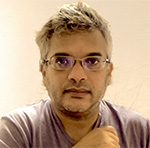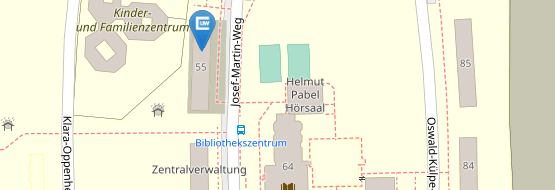Research Areas
Functional Nanosystems – Materials Chemistry (FN-MC)
- Design, synthesis, and functionalization of molecular nanostructures
- Applications in medicine, electronics, energy, and the environment
- Key topics: Molecular chemistry, bionanotechnology, spectroscopy, catalysis
The FN-MC branch focuses on the design, synthesis, and functionalization of nanostructures for applications in medicine, electronics, energy, and environmental sciences. Core areas of expertise include synthetic organic, bioorganic, and polymer chemistry, bionanotechnology, spectroscopy, and computational chemistry.
The foundation is the complementary experimental and theoretical expertise in organic, supramolecular, biomolecular, and computational chemistry shared between researchers at JMU and IISER TVM. The research explores hybrid material systems that combine DNA, dyes, block copolymers, and carbon nanostructures for multimodal optical sensing and selective analyte detection.
Building on the IISER TVM group's expertise in modeling carbon nanostructures, the project integrates quantum chemistry and global optimization techniques to investigate interactions with atoms, ions, and molecules for sensing, separation, and storage. Guided by computer-aided design, the study aims to modulate the electronic structures of nanographenes and nanoribbons through chemical modifications with nucleic acids.
Collaborative efforts with experts in spectroscopic analysis (focus area FN-PH) will drive the development of novel functional nanostructures for sensing applications.
Luminescent Nanosystems studies in the Hariharan and Würthner labs comprise supramolecular complexes of p-conjugated molecules whose emission properties are governed by non-covalent interactions.
The internship projects in the Würthner laboratory at the Institute of Organic Chemistry in Würzburg are devoted to the synthesis of supramolecular complexes formed by nanographene scaffolds with suitable dyes or organometallic sensitizers. The internship projects in the Hariharan laboratory at IISER Thiruvananthapuram elucidate the photophysical properties of the supramolecular complexes by time-resolved optical spectroscopy. For the most promising materials systems, organic light emitting diodes will be fabricated in the Würthner laboratory at the Center for Nanosystems Chemistry in Würzburg.
In the Würthner group students will learn to synthesize larger nanographenes, the characterization techniques for supramolecular complexation and steady-state optical spectroscopies (UV/Vis absorption, fluorescence). In the Hariharan group students will learn how to carry out femtosecond transient absorption spectroscopy and how to evaluate the acquired data by software packages such as Glotaran.
References
Prof. Dr. Mahesh Hariharan
Rerearch area:
Photochemistry and Physical Chemistry, time-resolved optical spectroscopy
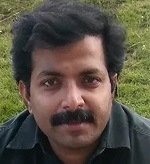
Prof. Dr. Frank Würthner
Research area:
Organic Chemistry, supramolecular functional materials

Functional Biomolecular Nanosystems studied in the Höbartner and Vijayan labs comprise DNA, RNA, and proteins that are the fundamental building blocks for life, and that are synthetically modified and repurposed for functions beyond those found in Nature.
The internship projects are part of ongoing research in engineering fluorescent nucleic acids and mimics of fluorescent proteins. The program includes studies of fluorogenic light-up aptamers that activate conditional fluorophores. Aptamers are made of defined DNA/RNA sequences that fold into 3D structures to form a specific binding site for a small molecule ligand. Other functional nucleic acids of interest in the Höbartner group include RNA-modifying ribozymes. Ribozymes are enzymes made of RNA that are generated in the laboratory to catalyze reactions for which there is no known RNA catalyst in Nature. Aptamers and Ribozymes are emerging functional nanosystems , for example for engineering metabolite sensors with potential future applications in medical diagnostics.
In the Vijayan group students will learn biomolecular NMR spectroscopy and investigate the structure and dynamics of various functional nanosystems made of DNA, RNA or proteins and their interactions with small molecules.
In the Höbartner groups the students will contribute to the biochemical and spectroscopic characterization of fluorescent aptamers and RNA-modifying ribozymes. The planned investigations will focus on the activity of aptamers or ribozymes for activating and installing new fluorophores, on structural requirements of the ligands with the possibility to expand to carbon nanostructures, as well as on metal ion dependence. The students will learn modern preparative and spectroscopic methods in the field of organic and biomolecular chemistry.
Prof. Dr. Claudia Höbartner
Research area:
Organic Chemistry, RNA aptamers & fluorescent DNA
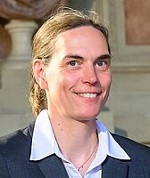
Prof. Dr. Vinesh Vijayan
Research area:
Physical Chemistry, NMR of peptide/protein/nucleic acid frameworks
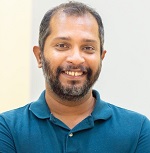
Nanosystems comprised of synthetic block copolymer micelles, nanogels and polyplexes, embedding immunomodulatory drugs or therapeutic RNA and DNA, offer unique features which are ideal to use them in drug delivery applications. They include excellent biocompatibility, stability under physiological conditions, and allow the integration of cell targeting moieties.
The internship projects are part of ongoing research in the design of such type of nanocarriers and their evaluation under applicable in vitro conditions. Such work includes advanced organic monomer syntheses, well-controlled polymerization strategies, nanoparticle formulation concepts and drug loading methods, followed by quantitative physicochemical characterization under in vitro conditions.
In the Nuhn group, the students can contribute to the ongoing research efforts in monomer/polymer/nanoparticle design. The students will have a chance to learn modern preparative methods and analytical tools in the field of organic polymer and biomolecular chemistry.
In Varghese’s group, the student will explore the potential of the nanoparticle as a drug carrier for the delivery of various anti-cancer agents. The student will be able to probe the potential of the nanocarrier both in vitro and in vivo mouse model. Drug delivery will be probed by using the standards assays and also will be analysed using confocal microscopic and other techniques.
References
Prof. Dr. Lutz Nuhn
Fakultät für Chemie und Pharmazie
Theodor-Boveri-Weg C10
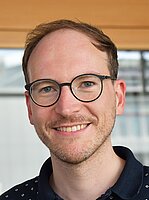
Dr. Reji Varghese
Research area:
Bioorganic Chemistry, DNA based supramolecular structures
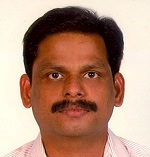
Functional nanosystems based on extended carbon frameworks exhibit tunable excited-state properties that are highly relevant for photonic and optoelectronic applications. The Swathi and Röhr groups combine complementary theoretical approaches to investigate how structural motifs and chemical functionalization modulate the photophysical behavior of these nanomaterials.
In the Swathi lab, students will apply particle swarm optimization and physically motivated model potential techniques to predict stable geometries and interaction patterns of aggregates of carbon-based molecular systems. These predicted structures form the basis for excited-state quantum chemical simulations in the Röhr group, where students will use configuration interaction methods as well as semiempirical electronic structure models techniques to analyze electronic excitation spectra, state ordering, and the spatial character of excited states.
The aim is to uncover how size, edge topology, and substitution influence singlet–triplet gaps, transition densities, and spin-orbit coupling effects in carbon nanostructures. Students will learn how supramolecular geometry, local electronic structure, and symmetry interact to shape the excited-state landscape. The project provides training in structural modeling, excited-state electronic structure theory, and the interpretation of quantum chemical data for extended molecular systems.
References
Dr. Merle Insa Silja Röhr
Research area:
Theoretical Chemistry, QM of multiexciton states, metadynamics for functional landscapes
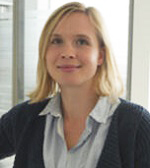
Prof. Dr. R. S. Swathi
Research area:
Theoretical Chemistry and Quantum Chemistry, computational material science
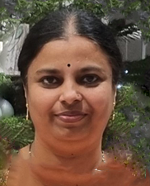
Functional Nanosystems – Photonics (FN-PH)
- Light–matter interactions and photonic quantum technologies
- Development of electrically tunable plasmonic nanoantennas
- Applications: Nanophotonics, optoelectronics, quantum optics
The FN-PH strand focuses on exploring weak to strongly coupled light–matter interactions, where engineered nanosystems enhance energy harvesting for solar conversion, energy-efficient optoelectronics, and advanced photonic devices. A central research area is the development of tunable plasmonic nanoantennas for applications in nanophotonics, optoelectronics, and quantum optics.
By investigating nanoscale interactions, the project aims to achieve precise spatial and spectral control over absorption, emission, and scattering—benefiting high-performance photovoltaics, photodetectors, and quantum photon sources. Core competencies include the design and fabrication of nanostructured surfaces, metamaterials, metasurfaces, and hybrid nanocomposites, supported by spectroscopic analysis and computational modeling.
Plasmonic nanoantennas are at the forefront of nanophotonics, enabling enhanced light emission and absorption for optoelectronic applications. This research will develop electrically addressable plasmonic architectures that precisely manipulate light–matter interactions, improving emission efficiency in next-generation nano-LEDs and quantum light sources.
By integrating active tuning mechanisms such as electro-optic modulation or voltage-controlled gating, the project will enable real-time control over localized plasmons. These nanoantennas will also enhance infrared photodetection sensitivity, benefiting biosensors and optical communication systems.
To optimize performance, the project employs advanced nanofabrication techniques, numerical simulations, and experimental characterization. The findings will drive the development of miniaturized, energy-efficient optoelectronic devices with tunable functionalities, paving the way for adaptive displays, dynamic imaging systems, and quantum photonics applications.
We develop and apply methods of femtosecond laser spectroscopy to investigate ultrafast dynamics in molecular and condensed-matter systems including nanoplasmonics, 2D materials, and hybrid nanostructures. In particular, we are interested in isolating multi-particle dynamics in complex quantum systems by isolating various nonlinear orders [1]. In the context of an ERC Advanced Grant [2], we extend our new technique to other spectroscopic observables and time-resolved microscopy. This allows us, among other things, to follow energy transfer through space and time and study the interactions between various excitations.
[2] ERC Advanced Grant: 2.5 Million Euros for Tobias Brixner
Prof. Dr. Tobias Brixner
Research area:
Physical Chemistry, ultrafast two-dimensional electronic spectroscopy

Prof. Rajeev N. Kini
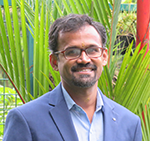
(Kopie 1)
The structure and dynamics of excited molecular states play a crucial role in diverse environments, including the interstellar medium (ISM), planetary atmospheres, and man-made plasmas. Gaining quantum-level insights into the ultrafast evolution of these states is essential. Time-resolved gas-phase electronic spectroscopy and photofragment dynamics studies are at the forefront of exploring such processes beyond the Born–Oppenheimer approximation, on femtosecond timescales.
Gope’s lab employs advanced experimental tools such as Velocity Map Imaging (VMI), Coulomb Explosion Imaging (CEI), and a COLTRIMS-based setup integrated with supersonic molecular beams, complemented by pump–probe spectroscopy. By combining multiparticle probes, including electron beams and ultrafast lasers, the group investigates ultrafast molecular dynamics with high precision. A distinctive strength of their approach lies in the ability to reconstruct the full 3D momentum distributions of ions and electrons in coincidence, a step toward mapping the potential energy surfaces of excited molecular states. In particular, the lab utilizes attosecond extreme-ultraviolet pulses, generated via high-order harmonic generation (HHG), to both initiate and track molecular motion on ultrafast timescales, often involving complex and non-trivial dynamics [1,2].
[1] Gope, K., Livshits, E., Bittner, D. M., Baer, R., & Strasser, D. (2021). Two pathways and an isotope effect in H3+ formation following double ionization of methanol. Natural Sciences, 1(2), e10022.
[2] Gope, K., Livshits, E., Bittner, D. M., Baer, R., & Strasser, D. (2022). An “inverse” harpoon mechanism. Science Advances, 8(39), eabq8084.
Prof. Dr. Ingo Fischer
Research area:
Physical Chemistry, gase phase spectroscopy

Dr. Adithya Lakshmanna
Research area:
Physical Chemistry, time-resolved vibrational & circular dichroism spectroscopy
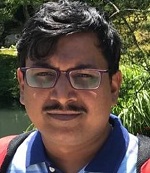
Prof. Dr. Bert Hecht
Group leader Nano-Optics and Bio-Photonics
Experimental Physics 5
University of Würzburg
Am Hubland
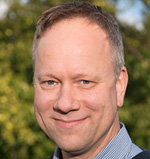
Prof. Dr. Joy Mitra
IISER - Thiruvananthapuram
Maruthamala PO, Vithura
